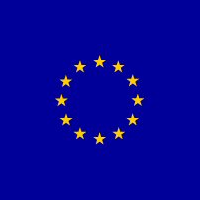Glycosyltransferases
Glycosyltransferases (GT) (EC 2.4.x.y) catalyze the formation of glycosidic bonds through the exchange of carbohydrate moieties, mainly monosaccharides, from activated donors (or “glycosyl” donors) to certain acceptor molecules. GT’s who use nucleotide activated sugars, eg. UDP-glucose/UDP-galactose/UDP-mannose, as donor are called “Leloir” GT’s, while those who use non-nucleotide activated donors, including (pyro)phosphate or polyprenolphosphate, are named “Non-Leloir” GT’s. A broad set of compounds can be used as acceptor, going from other carbohydrates to fatty acids, nucleic acids, proteins, flavonoids of other chemical nature.
Based on their amino acid sequence similarities, more than 90 different families of GT’s are described till date. Despite this large amount of families, only two general folding types are present at the 3D level, named the GT-A and GT-B folds. This finding might indicate that the majority of the characterized GT’s evolved from a small amount of ancestral sequences.
The stereochemical outcome of its catalytic mechanism defines whether it is a “retaining” or an “inverting” GT. The anomeric configuration of the product can either be retained (“retaining GT”) or inverted (“inverting GT”) with respect to the donor substrate. Due to their extreme high efficiency and selectivity, and their high expression yields, GT’s are advantageous over other carbohydrate-modifying enzymes (including glycosyl phosphorylases and glycosyl hydrolases) for use in industrial glycosylation reactions.
Sucrose synthase (SuSy) (EC 2.4.1.13)
In this project we will partly focus on sucrose synthase (SuSy), an important enzyme in sucrose metabolism in plants which catalyzes the non-hydrolytic breakdown of sucrose in fructose and UDP-activated glucose (UDP-glucose) products (Figure 2). SuSy homologues are also present in certain photosynthetic Cyanobacteria (eg. Thermosynaechococcus, Anabaena) and some proteobacteria. SuSy is member of the retaining GT-4 like family of Leloir GT’s and falls under the GT-B fold superfamily. The interesting aspect of Susy is that this enzyme, in contrast to other GT’s, favours the formation reaction, hence the production of expensive UDP-glucose. This UDP-glucose can then in turn be used as possible substrate for other GT-catalyzed reactions.
Levansucrase (EC 2.4.1.10)
The enzymatic activity of SuSy is coupled in this project to a second important carbohydrate-modifying enzyme, e.g. levansucrase, also a glycosyltransferase. This enzyme has an important function in the enzymatic production of sucrose analogues starting from simple sucrose molecules as a cheap, abundant and renewable substrate. As a biocatalyst, levansucrase transfers the fructosyl moiety of sucrose to a broad range of monosaccharides, including D-galactose, D-mannose, D-xylose. In this way, a variety of corresponding sucrose analogues, like galactofructose, mannofructose and xylofructose, can be produced. These sucrose analogues are unnatural disaccharides that will on their turn serve as substrate for the production of the expensive nucleotide-activated sugars (i.e. UDP-glucose, UDP-galactose, UDP-mannose) by the coupled SuSy-catalyzed reaction.
The structurally best studied levansucrase is the one from Bacillus megaterium, SacB (Strube et al., 2011). This enzyme is a member of the GH68 family and typically forms a single globular domain with a five-fold propeller motif and a central negatively charged cavity acting as active site (Figure 3). All catalytic residues and polysaccharide interaction motifs present in this active site have been revealed by introducing mutations at the specific sites and screen for outcome.
References
• Lairson LL, Henrissat B, Davies GJ, Withers SG (2008). Glycosyltransferases: structures, functions, and mechanisms. Annu Rev Biochem. 2008;77:521-55.
• Strube CP, Homann A, Gamer M, Jahn D, Seibel J, Heinz DW (2011). Polysaccharide synthesis of the levansucrase SacB from Bacillus megaterium is controlled by distinct surface motifs. J Biol Chem. 2011 May 20;286(20):17593-600.
• Zheng Y, Anderson S, Zhang Y, Garavito RM (2011). The structure of sucrose synthase-1 from Arabidopsis thaliana and its functional implications. J Biol Chem. 2011 Oct 14;286(41):36108-18.





